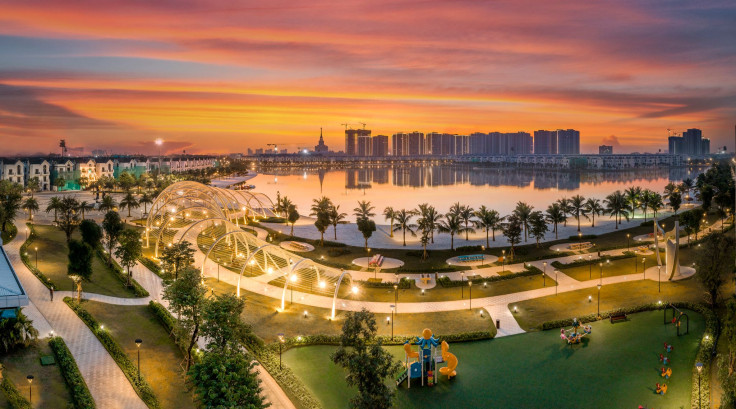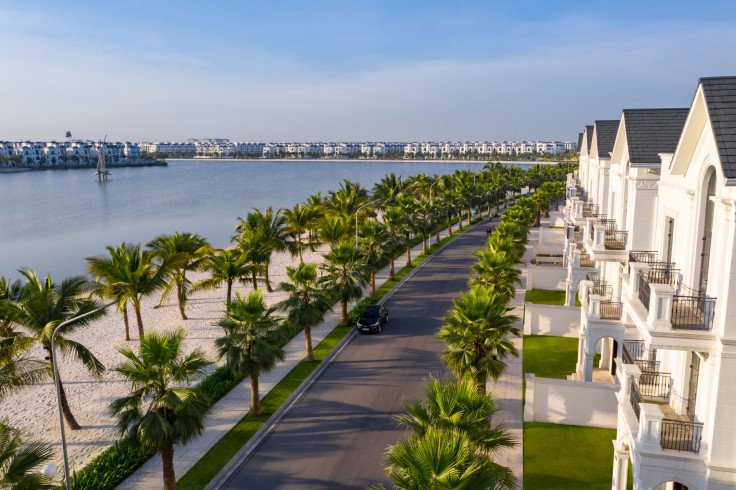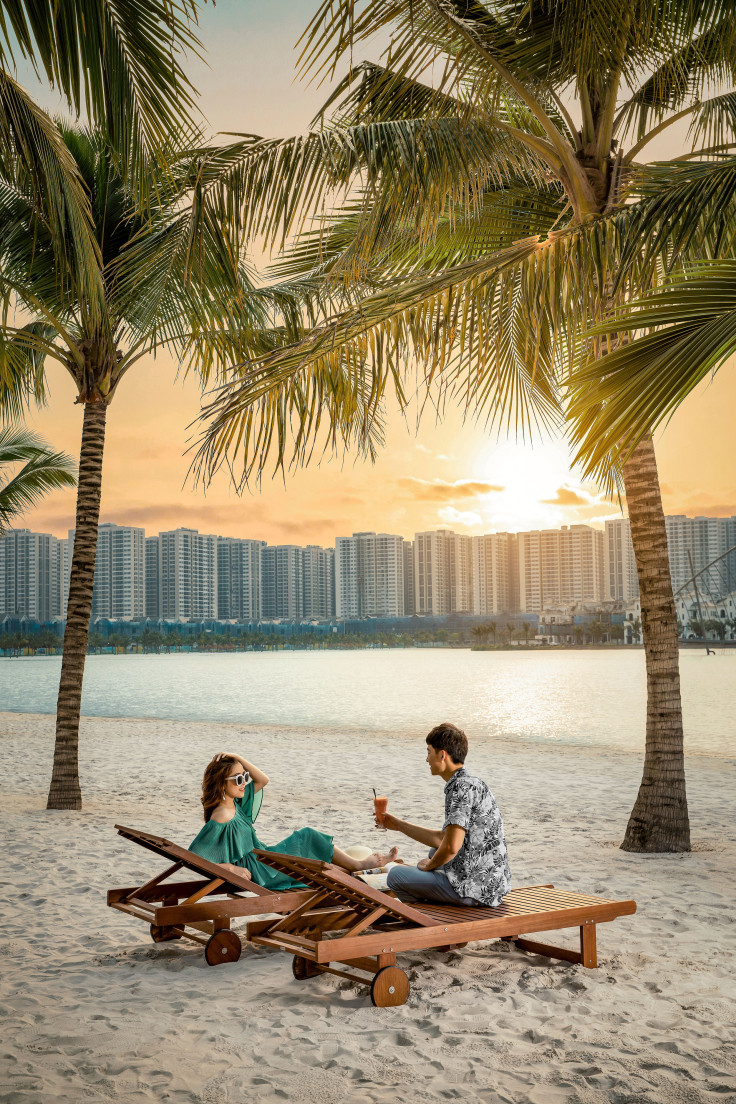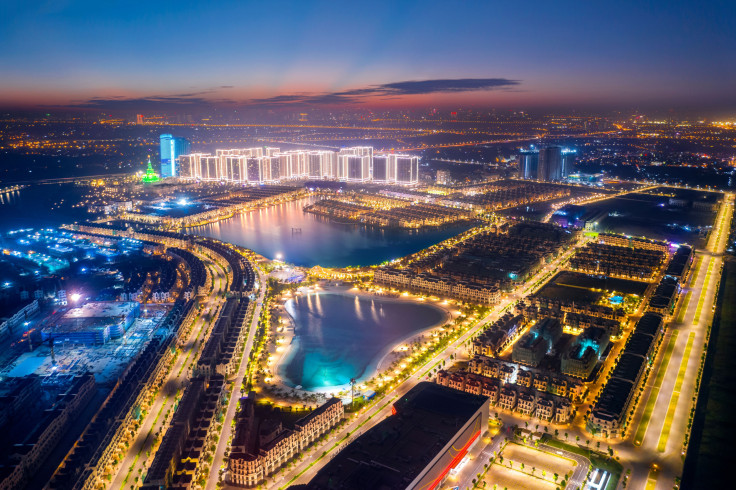Urban Exodus vs. Urban Oasis: the Post Pandemic's Mixed Picture of City Life
The pandemic has sparked a global change in urban living, from sprawling suburbs to gated green havens. While Westerners escape the city centre, some Asians refuse to sacrifice the convenience of urban life. They have the foundation for this choice, as mega-complexes of thousands of hectares, like Vietnam's Ocean City, are taking root in the heart of bustling cities, aspiring to fulfill every resident's need.

The COVID-19 pandemic, a seismic event that shuttered lives and reshaped routines, has triggered a fascinating divergence in global urban migration patterns.
In the West, a wave of escape from major cities is cresting, fueled by a longing for wide-open spaces, the newfound ease of remote work, and a burgeoning green living movement. From San Francisco to Toronto and Sydney, the exodus is palpable as residents trade skyscrapers for sprawling suburbs or idyllic countryside retreats.
But in Asia, amidst the thrumming energy of the metropolis, fresh and airy complexes are blossoming, offering residents a refuge from the concrete cacophony without sacrificing the pulse of urban life.
This burgeoning trend has piqued the interest of real estate giants, eager to cater to a new breed of city dwellers who refuse to choose between nature's embrace and urban dynamism. Vietnam's Vinhomes, Malaysia's Matrix Concepts Group, and Cambodia's Peng Huoth Group have all become players in this game.

Urban landscapes are changing
"The past 30 years were a golden era for large cities," Stijn Van Nieuwerburgh, a real estate and finance professor at Columbia Business School, wrote in November 2022. But things have changed since the Covid-19 pandemic hit New York and other population hubs. In Van Nieuwerburgh's telling, the Covid-19 crisis "triggered a massive migration response. Many households fled urban centres."
More than 64,000 people left Toronto for other parts of Ontario from mid-2020 to mid-2021, up 14 per cent from the previous 12-month period, according to Statistics Canada population estimates.
As the pandemic endured and subsequent coronavirus variants prompted employers to postpone return-to-office plans, scholars are increasingly voicing concern that the shift will halt the three-decade renaissance of major cities, setting off an era of urban decay.
But across the Asia-Pacific, a contrasting trend is unfolding.
As the grip of the COVID-19 pandemic loosened, a swift decision took root in the mind of Hien Nguyen, Hanoi, the capital of Vietnam. He swapped his cramped city-centre dwelling for a sprawling, 1,200-hectare haven within the self-contained mega-complex Ocean City.
"Even if a pandemic's shadow falls again," he mused. "I may be confined to my backyard, but within its embrace, I'll have a lake at my doorstep, a hospital a stone's throw away, and a school, supermarket, gym, pool, and cinema, all woven into the very fabric of my home," he confided.

In the dynamic metropolises of Asia, a different kind of urbanism is taking root. Instead of fleeing the city centre, residents increasingly gravitate towards sprawling residential mega-complexes that sprout like futuristic fortresses within the urban fabric.
These self-contained behemoths, with their integrated shopping malls, man-made lakes, and comprehensive entertainment facilities, offer a compelling proposition: the convenience and vibrancy of city life cocooned within a secure and green bubble.
In the West, the pandemic has amplified a pre-existing yearning for nature and a sense of vulnerability towards densely populated spaces. Conversely, a collectivist ethos and a long history of navigating epidemics have fostered a greater tolerance for density in Asia. Additionally, the rapid pace of urbanization has left many yearning for the amenities and community mega-complexes provide.
Cities within cities
While developed nations experience one per cent annual urban growth, Asian metropolises have ballooned at a heady 3.4 per cent since 1970, according to the U.N.'s "The Future of Asian and Pacific Cities." This urbanisation surge, far from a blip, underscores a fundamental shift in global demographics. As Dr Robert Guild, Asian Development Bank's sustainability chief, succinctly says, "Asia's future is urban."
Seventeen of the world's 33 megacities – population ten million-plus – call Asia home. A recent Knight Frank survey paints a telling picture: Asian buyers remain firmly rooted in urban aspirations, while the rest of the world is increasingly eyeing and buying in suburban, resort, and coastal destinations.
The draw is undeniable. Urban environments offer dazzling constellations of amenities, seamless connectivity, and economic engines throbbing with opportunity. But anxieties woven by the pandemic and a rising clamour for environmental responsibility cast a shadow on this seemingly unstoppable juggernaut. The current model of sprawl, critics argue, needs to be revised.
As the region's urban tide continues to rise, navigating these currents will be one of the defining challenges of this century. The answer, many believe, lies in a conscious pivot towards compact, human-centric spaces. Imagine vibrant neighbourhoods designed to foster social cohesion and nurture mental well-being.

Vinhomes, Vietnam's largest real estate developer, has decided to become one of the answers. The company in the business empire of billionaire Pham Nhat Vuong, Vietnam's richest man, introduced a 1,200-ha all-in-one mega-complex called Ocean City. This complex promises apartments and a self-contained universe where residents can live, work, play, and shop without ever leaving its gated confines.
From sprawling parklands, unique artificial lakes, movie theatres, mega malls, and shophouses to water parks, the construction of the state-of-the-art hospital having just commenced, coupled with a comprehensive educational system spanning from kindergarten to university, Ocean City aims to redefine urban living, offering residents a healthy, fulfilling life brimming with experiences.
Privileges behind the gates
For centuries, Hanoi, Vietnam's bustling capital, stood distant from the sea, its nearest beach shimmering 100 kilometres away. However, Vinhomes has brought the taste of the sea into the heart of the city with a 6.2-hectare artificial saltwater lake. The sand was hand-picked from Nha Trang, Vietnam's premier coastal paradise, ensuring every step feels like a mini-vacation. There is also a 24.5-hectare man-made freshwater lake nearby.
With this move, Vinhomes wants to set foot in the healing industry, which is increasingly expanding as the world develops at breakneck speed. ADB ranks Vietnam as one of the fastest-growing economies in Asia. In the latest macroeconomic update, Standard Chartered Bank (U.K.) forecasts Vietnam's gross domestic product growth at 6.7 per cent this year. At the same time, the International Monetary Fund (IMF) expects Vietnam's GDP growth to be 5.8 per cent and 6.9 per cent in 2024 and 2025, respectively.
Meanwhile, Vietnam's concrete tide keeps rising, fueled by a steady stream of migrants abandoning rural fields for urban horizons. Official government data paints a clear picture: the country's urban population surged by 0.6 percentage points in 2023, pushing the national rate to 38.1 per cent.
Hanoi's skyline may gleam with ambition for Rick Hofstadter, an American fund manager. Vietnam's burgeoning economy lured him to its shores, but the country's unique ability to offer a vibrant, convenient life seamlessly intertwined with pockets of tranquillity keeps him rooted.

While his company thrives in Hanoi's central hub, Hofstadter lives in Ocean City, even though it takes him 30 minutes each way to commute. "It's about balance," he confesses. "The commute becomes a 30-minute decompression chamber where city pressures dissipate in the rearview mirror."
Crossing Ocean City's threshold, Hofstadter sheds the urban dust. "The gates close on the honking chaos, and a sense of serenity washes over me," he shares. The expanse of an artificial saltwater lake beckons, inviting him to trade financial spreadsheets for sandcastles with his young daughter.
"I'm proof," he concludes with a smile, "that success doesn't have to be a zero-sum game. You can chase your dreams in the city lights but find peace at home."
That's also why developers like Vinhomes build complexes with mental well-being as a critical focus. At Ocean City, the world's largest wave pool, an artificial sea, and dozens of sports parks, children's playgrounds, and serene green spaces are all carefully distributed throughout the project. This meticulous design fosters a diverse and active lifestyle, improving residents' physical and mental health.
An irreversible trend across Asia
A recent global report by PWC claimed that families in most emerging economies would prefer moving to a gated community, called urban townships, integrated communities, or cities within cities.
Matrix Concepts Group, a Malaysian development powerhouse born just two decades ago, aims to solidify its legacy with Bandar Sri Sendayan. This expansive 2,500-ha behemoth within the Greater Klang Valley promises a self-contained, self-sufficient lifestyle nestled amidst major roads and the future high-speed rail link to Singapore.
Lushly landscaped phases dedicate sprawling space to residences, leisure facilities, and commercial hubs to lure multi-generational families, investors, and local residents alike.
In Vietnam, escaping cities' smog and chaos is the essence of Ocean City and other Vinhomes' mega-projects, catalyzing crucial discussions about the future of cities and their communities.

With Ocean City, according to Vietnamese economic expert Vu Dinh Anh, this 1,200-hectare behemoth, twice the size of a central Hanoi district and poised to house 200,000 residents, "is generating buzz not just for its scale, but for its potential to redefine Vietnam's urban landscape."
"Ocean City has created the value of a separate city," declares Vu. "This chain of mega-complexes will act as pioneers, pushing the boundaries of what's possible." He elaborates, "For other developers, it's a gauntlet thrown down. To compete, they must step up their game, creating spaces that offer the same level of integrated living and working environments."
The appeal of these multi-utility complex chains resonates with Le Hoang Chau, Chairman of the Ho Chi Minh City Real Estate Association. He sees them as lucrative ventures and sustainable solutions to Vietnam's burgeoning urban needs.
"They're the future," he proclaims, "the most efficient way to save land and social resources."
© Copyright IBTimes 2025. All rights reserved.





















